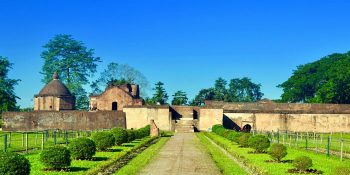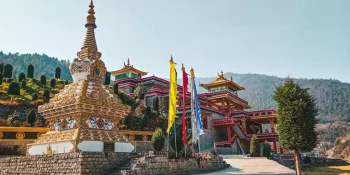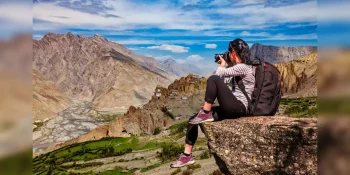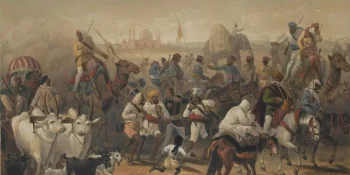Chitrakoot Dham, nestled in the heart of India, holds profound spiritual significance in Hindu mythology and history. Located in the state of Madhya Pradesh, along the banks of the Mandakini River, Chitrakoot is revered as the sacred abode of Lord Rama during his exile years described in the Hindu epic, Ramayana. Here’s a glimpse into the spiritual tapestry of Chitrakoot Dham:
1. Ramayana Connection: Chitrakoot is intimately linked with the epic of Ramayana. It is said that Lord Rama, along with his wife Sita and loyal brother Lakshmana, spent around eleven and a half years of their fourteen-year exile in the serene environs of Chitrakoot. The forests, rivers, and caves of Chitrakoot bear witness to the divine presence of the trio, making it a hallowed pilgrimage site for millions of devotees.
2. The Divine Landscape: The natural beauty of Chitrakoot, with its lush greenery, rolling hills, and gurgling streams, is believed to have inspired the spiritual practices of the gods and sages. The area is dotted with sacred spots like Ramghat, where Lord Rama is said to have taken a dip in the Mandakini River, and Kamadgiri, a hill believed to be the embodiment of Lord Hanuman’s devotion.
3. Mythological Significance: Chitrakoot is steeped in mythology, with each rock, cave, and tree bearing a tale from the Ramayana. The Bharat Milap Temple commemorates the reunion of Lord Rama and his brother Bharata. Hanuman Dhara, a natural spring on a hill, is believed to have been created by Lord Rama to quench Hanuman’s thirst. These mythological narratives infuse the atmosphere with an aura of divinity, inviting pilgrims to immerse themselves in devotion.
4. Spiritual Practices: Devotees flock to Chitrakoot to engage in various spiritual practices such as meditation, recitation of scriptures, and devotional singing. The tranquil ambiance of the place facilitates introspection and communion with the divine. Many pilgrims undertake parikrama, circumambulating the sacred sites, as a form of penance and reverence.
5. Cultural Heritage: Chitrakoot is not only a spiritual center but also a repository of cultural heritage. The town reverberates with the melodious strains of bhajans, kirtans, and religious discourses. Festivals like Ram Navami, Diwali, and Chitrakoot Mahotsav are celebrated with great fervor, showcasing the rich cultural tapestry of the region.
6. Eternal Pilgrimage: For devout Hindus, a visit to Chitrakoot is not merely a journey but a pilgrimage of the soul. It is believed that the mere sight of the sacred land and the touch of its holy waters can absolve one of sins and bestow spiritual blessings. Pilgrims come seeking solace, redemption, and divine grace, reaffirming their faith in the eternal presence of the divine.
7. Universal Appeal: While Chitrakoot holds special significance for followers of Hinduism, its spiritual aura transcends religious boundaries. People from all walks of life, irrespective of caste, creed, or nationality, are drawn to its mystical charm. The universal message of love, righteousness, and devotion embodied in the Ramayana resonates with seekers of truth everywhere.
In essence, Chitrakoot Dham stands as a timeless beacon of spirituality, beckoning pilgrims to embark on a sacred journey of self-discovery and divine communion. Its sacred landscapes, mythological legends, and cultural heritage converge to create a tapestry of devotion that continues to inspire and uplift the human spirit.









